Luis F. Abanto-Leon
Faulty RIS-aided Integrated Sensing and Communication: Modeling and Optimization
May 23, 2025Abstract:This work investigates a practical reconfigurable intelligent surface (RIS)-aided integrated sensing and communication (ISAC) system, where a subset of RIS elements fail to function properly and reflect incident signals randomly towards unintended directions, thereby degrading system performance. To date, no study has addressed such impairments caused by faulty RIS elements in ISAC systems. This work aims to fill the gap. First, to quantify the impact of faulty elements on ISAC performance, we derive the misspecified Cram\'er-Rao bound (MCRB) for sensing parameter estimation and signal-to-interference-and-noise ratio (SINR) for communication quality. Then, to mitigate the performance loss caused by faulty elements, we jointly design the remaining functional RIS phase shifts and transmit beamforming to minimize the MCRB, subject to the communication SINR and transmit power constraints. The resulting optimization problem is highly non-convex due to the intricate structure of the MCRB expression and constant-modulus constraint imposed on RIS. To address this, we reformulate it into a more tractable form and propose a block coordinate descent (BCD) algorithm that incorporates majorization-minimization (MM), successive convex approximation (SCA), and penalization techniques. Simulation results demonstrate that our proposed approach reduces the MCRB performance loss by 24.36% on average compared to the case where the presence of faulty elements is ignored. Furthermore, the performance gain becomes more evident as the number of faulty elements increases.
Optimal User and Target Scheduling, User-Target Pairing, and Low-Resolution Phase-Only Beamforming for ISAC Systems
Jan 20, 2025Abstract:We investigate the joint user and target scheduling, user-target pairing, and low-resolution phase-only beamforming design for integrated sensing and communications (ISAC). Scheduling determines which users and targets are served, while pairing specifies which users and targets are grouped into pairs. Additionally, the beamformers are designed using few-bit constant-modulus phase shifts. This resource allocation problem is a nonconvex mixed-integer nonlinear program (MINLP) and challenging to solve. To address it, we propose an exact mixed-integer linear program (MILP) reformulation, which leads to a globally optimal solution. Our results demonstrate the superiority of an optimal joint design compared to heuristic stage-wise approaches, which are highly sensitive to scenario characteristics.
Hierarchical Functionality Prioritization in Multicast ISAC: Optimal Admission Control and Discrete-Phase Beamforming
Dec 31, 2024Abstract:We investigate the joint admission control and discrete-phase multicast beamforming design for integrated sensing and communications (ISAC) systems, where sensing and communications functionalities have different hierarchies. Specifically, the ISAC system first allocates resources to the higher-hierarchy functionality and opportunistically uses the remaining resources to support the lower-hierarchy one. This resource allocation problem is a nonconvex mixed-integer nonlinear program (MINLP). We propose an exact mixed-integer linear program (MILP) reformulation, leading to a globally optimal solution. In addition, we implemented three baselines for comparison, which our proposed method outperforms by more than 39%.
* 5 pages
Resource Allocation for ISAC Networks with Application to Target Tracking
Dec 29, 2024

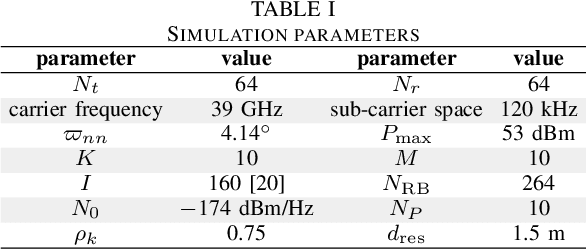
Abstract:Future 6G networks are expected to empower communication systems by integrating sensing capabilities, resulting in integrated sensing and communication (ISAC) systems. However, this integration may exacerbate the data traffic congestion in existing communication systems due to limited resources. Therefore, the resources of ISAC systems must be carefully allocated to ensure high performance. Given the increasing demands for both sensing and communication services, current methods are inadequate for tracking targets frequently in every frame while simultaneously communicating with users. To address this gap, this work formulates an optimization problem that jointly allocates resources in the time, frequency, power, and spatial domains for targets and users, accounting for the movement of targets and time-varying communication channels. Specifically, we minimize the trace of posterior Cram\'er-Rao bound for target tracking subject to communication throughput and resource allocation constraints. To solve this non-convex problem, we develop a block coordinate descent (BCD) algorithm based on the penalty method, successive convex approximation (SCA), and one-dimensional search. Simulation results demonstrate the validity of the proposed algorithm and the performance trade-off between sensing and communication.
LiquiRIS: A Major Step Towards Fast Beam Switching in Liquid Crystal-based RISs
Oct 28, 2024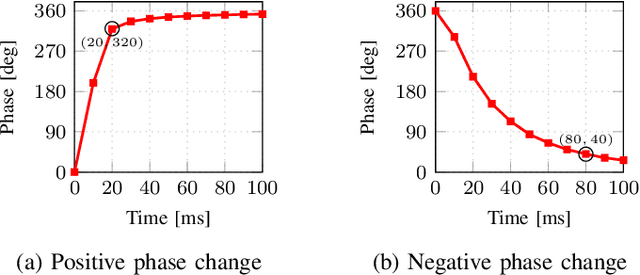
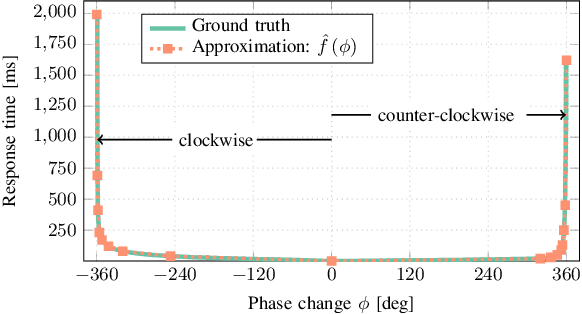
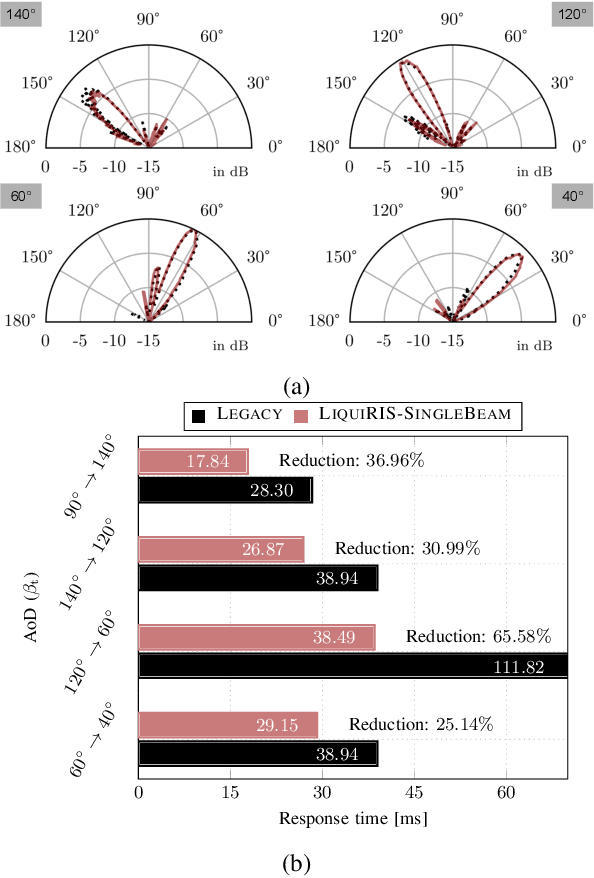
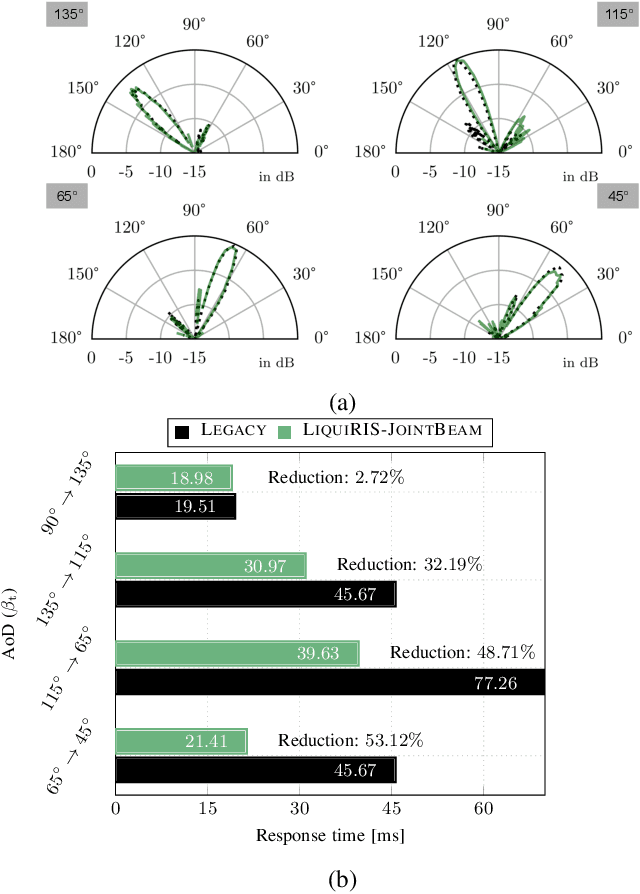
Abstract:Reconfigurable intelligent surfaces (RISs) offer enhanced control over propagation through phase and amplitude manipulation but face practical challenges like cost and power usage, especially at high frequencies. This is specifically a major problem at high frequencies (Ka- and V-band) where the high cost of semiconductor components (i.e., diodes, varactors, MEMSs) can make RISs prohibitively costly. In recent years, it is shown that liquid crystals (LCs) are low-cost and low-energy alternative which can address the aforementioned challenges but at the cost of lower response time. In LiquiRIS, we enable leveraging LC-based RIS in mobile networks. Specifically, we devise techniques that minimize the beam switching time of LC-based RIS by tapping into the physical properties of LCs and the underlying mathematical principles of beamforming. We achieve this by modeling and optimizing the beamforming vector to account for the rotation characteristics of LC molecules to reduce their transition time from one state to another. In addition to prototyping the proposed system, we show via extensive experimental analysis that LiquiRIS substantially reduces the response time (up to 70.80%) of liquid crystal surface (LCS).
Joint Communication and Sensing in RIS-enabled mmWave Networks
Oct 07, 2022
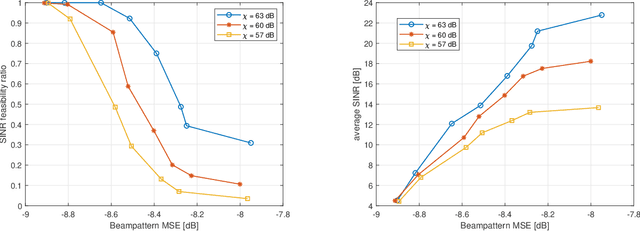
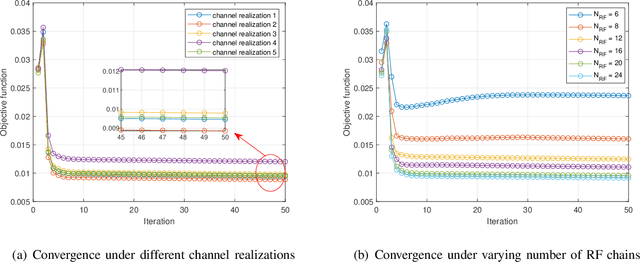
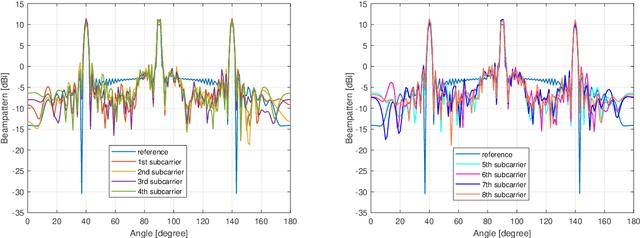
Abstract:Empowering cellular networks with augmented sensing capabilities is one of the key research areas in 6G communication systems. Recently, we have witnessed a plethora of efforts to devise solutions that integrate sensing capabilities into communication systems, i.e., joint communication and sensing (JCAS). However, most prior works do not consider the impact of reconfigurable intelligent surfaces (RISs) on JCAS systems, especially at millimeter-wave (mmWave) bands. Given that RISs are expected to become an integral part of cellular systems, it is important to investigate their potential in cellular networks beyond communication goals. In this paper, we study mmWave orthogonal frequency-division multiplexing (OFDM) JCAS systems in the presence of RISs. Specifically, we jointly design the hybrid beamforming and RIS phase shifts to guarantee the sensing functionalities via minimizing a chordal-distance metric, subject to signal-to-interference-plus-noise (SINR) and power constraints. The non-convexity of the investigated problem poses a challenge which we address by proposing a solution based on the penalty method and manifold-based alternating direction method of multipliers (ADMM). Simulation results demonstrate that under various settings both sensing and communication experience improved performance when the RIS is adequately designed. In addition, we discuss the tradeoff between sensing and communication.
Sequential Parametric Optimization for Rate-Splitting Precoding in Non-Orthogonal Unicast and Multicast Transmissions
Jan 25, 2022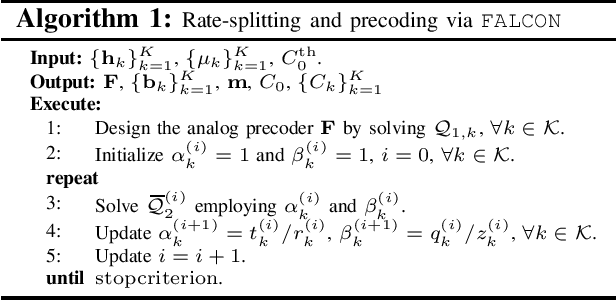
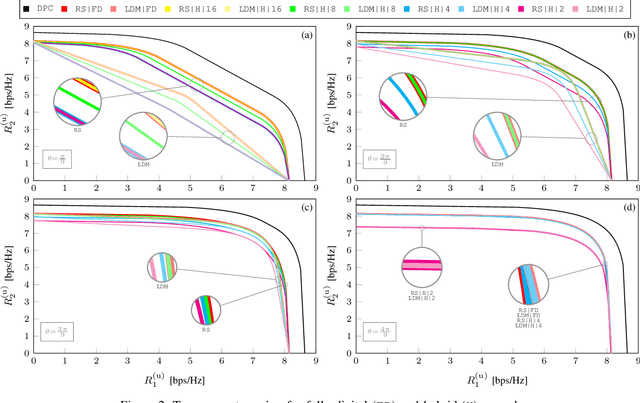
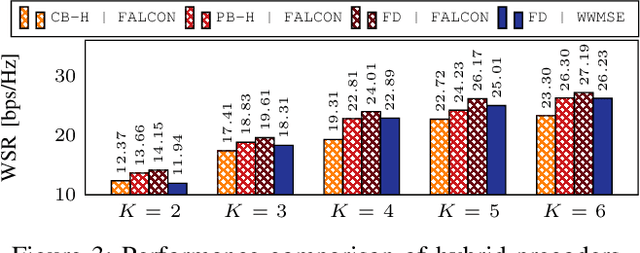
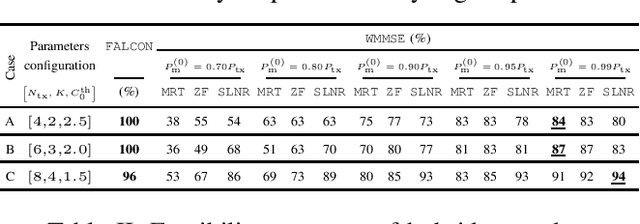
Abstract:This paper investigates rate-splitting (RS) precoding for non-orthogonal unicast and multicast (NOUM) transmissions using fully-digital and hybrid precoders. We study the nonconvex weighted sum-rate (WSR) maximization problem subject to a multicast requirement. We propose FALCON, an approach based on sequential parametric optimization, to solve the aforementioned problem. We show that FALCON converges to a local optimum without requiring judicious selection of an initial feasible point. Besides, we show through simulations that by leveraging RS, hybrid precoders can attain nearly the same performance as their fully-digital counterparts under certain specific settings.
BEAMWAVE: Cross-Layer Beamforming and Scheduling for Superimposed Transmissions in Industrial IoT mmWave Networks
Aug 09, 2021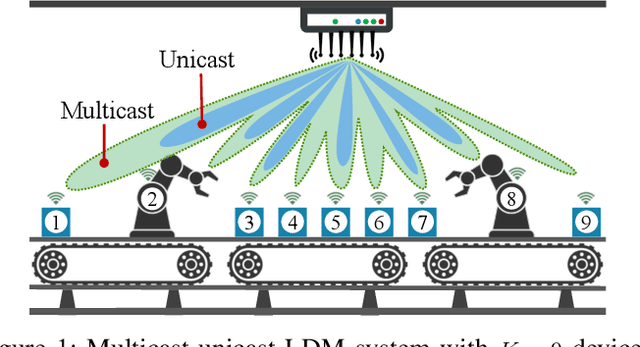
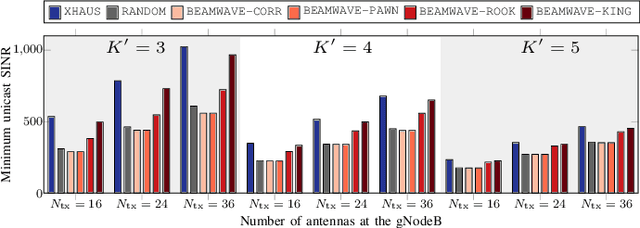


Abstract:The omnipresence of IoT devices in Industry 4.0 is expected to foster higher reliability, safety, and efficiency. However, interconnecting a large number of wireless devices without jeopardizing the system performance proves challenging. To address the requirements of future industries, we investigate the cross-layer design of beamforming and scheduling for layered-division multiplexing (LDM) systems in millimeter-wave bands. Scheduling is crucial as the devices in industrial settings are expected to proliferate rapidly. Also, highly performant beamforming is necessary to ensure scalability. By adopting LDM, multiple transmissions can be non-orthogonally superimposed. Specifically, we consider a superior-importance control multicast message required to be ubiquitous to all devices and inferior-importance private unicast messages targeting a subset of scheduled devices. Due to NP-hardness, we propose BEAMWAVE, which decomposes the problem into beamforming and scheduling. Through simulations, we show that BEAMWAVE attains near-optimality and outperforms other competing schemes.
* 8 pages. Accepted at WiOpt 2021
 Add to Chrome
Add to Chrome Add to Firefox
Add to Firefox Add to Edge
Add to Edge